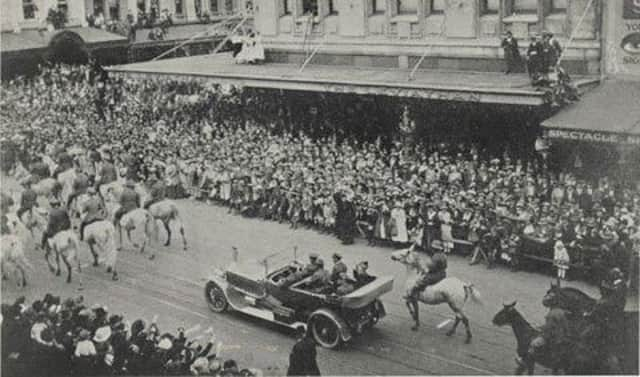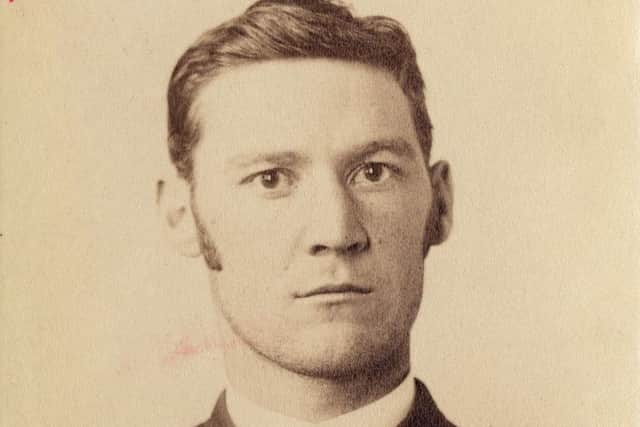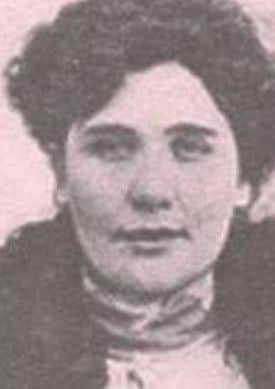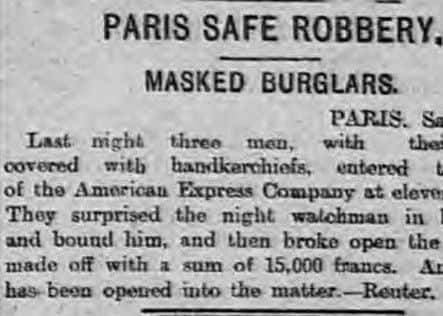Two more (of so many) stories about Irish people who made history in distant lands


Some are recounted at home too, with commemorative signposting, monuments and poignant anniversaries.
But there are far too many others whose grand deeds (and sometimes not so grand!) in distant lands have been virtually forgotten in their country of birth.
Advertisement
Hide AdAdvertisement
Hide AdThere are two more here today, famed afar but not so well known where they came from, the hugely contrasting life-stories of Co Longford’s ‘Queen of Crooks’ and Londonderry’s Lord Mayor of Melbourne.


The former robbed banks, swindled the rich and wooed mobsters in America and France, and the latter was a Presbyterian Orangeman who became a leather and footwear entrepreneur in Australia where, as Melbourne’s Lord Mayor, he was intricately involved in an Irish flags controversy.
There’s an intriguing story to be told about William Whyte Cabena, born in Derry on November 12, 1853, the son of Francis Cabena, a shipmaster, and his wife Rachel, née Whyte.
William became involved in a dispute about a St Patrick’s Day parade in Australia, and I hope some News Letter readers, perhaps with family connections, may be able to provide more information about this, and hopefully a picture or two.
Advertisement
Hide AdAdvertisement
Hide AdWilliam’s mother was of Scottish origin and his grandfather was originally from Italy.


After his schooling in Derry William became apprenticed to a merchant but like so many other people of his era was afflicted with the dreaded ‘consumption’ - also known as tuberculosis, or TB.
He emigrated to Australia, probably still suffering from the illness, and settled in Melbourne in 1874.
Having recovered from tuberculosis in 1877 he was appointed manager of Gavin Gibson and Co, a retail footwear business started in the 1850s with its headquarters in Melbourne.
Advertisement
Hide AdAdvertisement
Hide AdTen years later in 1887 William became a partner in the company and after Gibson’s death in 1888 he purchased a controlling interest.


By 1902 he was chairman of directors and manager of the company, now with further premises in Sydney.
He had other boot-manufacturing interests as well as a tannery in Adelaide and was well-known for his knowledge and understanding of international trade, trends and marketing techniques.
Cabena was also politically ambitious and in September 1902 he entered the Melbourne City Council.
Advertisement
Hide AdAdvertisement
Hide AdIn 1906 he became one of the council’s representatives on the Melbourne and Metropolitan Board of Works, particularly influential on its Finance Committee.
By 1910 he had virtually retired from his business career and was devoting most of his time and energy to local politics.
In June 1914 he was elected an Alderman with important roles in committees overseeing the economy and the city’s electricity supply.
He was a member of the Melbourne and Metropolitan Tramways Board and was elected Lord Mayor of Melbourne in 1918 after a bitter contest with the retiring candidate, Frank Stapley.
Advertisement
Hide AdAdvertisement
Hide AdSoon William was embroiled in a tangled controversy which had its roots in his homeland but also in Australia’s evolving history.
As an Orangeman and Presbyterian he responded to public protest at the flying of a Sinn Fein flag in Melbourne’s 1918 St Patrick’s Day procession, innovatively stipulating that no permit for the 1919 march would be granted unless the Union Jack and the Australian flag were publicly displayed, along with the singing of God Save the King.
Cabena took the St Patrick’s Day Committee’s ambiguous reply as a rejection of his demands and his decision to refuse a permit provoked considerable bitterness and laid the basis for subsequent St Patrick’s Day disputes in Melbourne.
Married in 1879 and again in 1915 after the death of his first wife, William Cabena died on December 11, 1928 was buried in Melbourne City cemetery.
Advertisement
Hide AdAdvertisement
Hide AdOur second lesser-recounted Irish emigrant boasts a hugely contrasting life-story to William’s.
Known as the ‘Irish Queen of Crooks’ or ‘Chicago May’ she was a serial criminal in America and France who married for money, broke into bank safes and wooed some of the Irish-American underworld’s most infamous rogues.
Born Mary Anne Duignan in Co Longford in 1870 she ran away from home with her parent’s life-savings when she was 19 and sailed to America via Liverpool.
She ingratiated herself with the USA’s criminal underworld, courted several mobsters and married into money, quickly divorcing for an expensive settlement.
Advertisement
Hide AdAdvertisement
Hide AdThe law caught up with her and she fled to London where in 1900 May met and fell in love with a young Irish criminal called Eddie Guerin.
Together they went to Paris and plotted some money-making schemes.
In 1901 Eddie blew the main safe of Paris’s American Express Company with explosives.
Guerin was caught and imprisoned but May returned to London to raise funds for Guerin’s release.
Advertisement
Hide AdAdvertisement
Hide AdShe was put in prison for trying to spring Guerin with forged documents, and on her release struck up a relationship with another criminal called Charley Smith.
Unsurprisingly, Eddie Guerin wasn’t too pleased about May’s new boyfriend.
When he arrived back in London after being released from his French prison cell in 1907, and intent on revenge, Eddie was shot and wounded by Charley.
May and Charley were arrested and May was sentenced to 15 years for her part in the attempted murder of her ex-boyfriend.
She served 10 years before being deported to the United States where she died, destitute, in 1929.